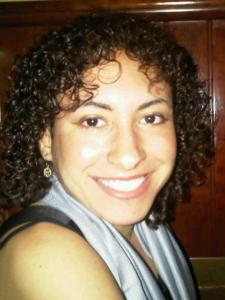
Peter H. answered • 05/29/14
Tutor
New to Wyzant
Tutoring in Math, Science, and Computer Engineering
Hi Steve,
Let's use P to be the number of pennies, D the number of dimes, and Q the number of quarters. With the information you've provided, we can write two equations. First, the total number of coins is 44, so:
P + D + Q = 44
Second, the total value is $4.37. So: 0.01 * P + 0.10 * D + 0.25 * Q = 4.37
Let's multiple the second equation by 100 on each side to get: P + 10 * D + 25 * Q = 437
Let's solve the first equation for Q. We subtract P and D from each side of the equation, and get:
Q = 44 - P - D
We can now substitute this into our second equation, to eliminate the Q variable:
P + 10 * D + 25 * Q becomes: P + 10 * D + 25 * (44 - P - D)
so we get: P + 10 * D + 25 * (44 - P - D) = 437
or: P + 10 * D + 25 * 44 - 25 * P - 25 * D = 437
or: P + 10 * D + 1100 - 25 * P - 25 * D = 437
or: P * (1 - 25) + D * (10 - 25) + 1100 - 437 = 0
or: -24 * P - 15 * D + 663 = 0
To make it a little clearer, I'll multiply each side by -1, and move the 663 to the right to get:
24 * P + 15 * D = 663
And we HAVE A BIG PROBLEM !! One equation, but two unknowns. This tells us that there probably is not a single (unique) answer. We also know that P, D, and Q must be whole numbers (can't have half a penny, for example). But still, we don't have enough information. But let's go a bit further. Let's take our equation with two unknowns, and split it so we have one unknown on each side. For example, let's move P over to the right side:
15 * D = 663 - 24 * P
or: D = (663 - 24 * P) / 15
Now we see something interesting -- the division by 15 -- because for a number to be divisible by 15, and the result be a whole number, then the numerator (that is, 663 - 24 * P) must end with "0" or "5". If not you can't divide by 15! How do we use this information ... well, we know that P cannot be 1 (a single penny), because (663 - 24 * P) = (663 - 24) = 639, and that does not end with 0 or 5. Could P be 2 ? We test (663 - 24 * 2) = (663 - 48) = 615, and sure enough, it ends in 5. Checking if 615 is divisible by 15, we get exactly 41 (that is D=41). Therefore, we have a solution as
P = 2 and D = 41
and remember from way at the top, Q = 44 - P - D. So, Q = 44 - 2 - 41 = 1 quarter. If we check the total value of P=2, D = 41, and Q = 1, sure enough, it's $4.37
How about P = 17 ? Checking (663 - 25 * P) = (663 - 24 * 17) = 663 - 408 = 255. 255 end with "5", so it's a possibility. For P = 17, we have D = (663 - 24 * 17) / 15 = 255 / 15 = 17. And Q = 44 - P - D. So, Q = 44 - 17 - 17 = 44 - 34 = 10 quarters. If we check the total value of P=17, D = 17, and Q = 10, sure enough, it's $4.37. (Always check your work...always). This is the solution Desiree gave us.
So far, we have two combinations that work, P=2, D = 41, and Q = 1; and P=17, D = 17, and Q = 10. As I wrote earlier, your problem does not have a unique answer.
So far, we've listed two combinations ... there are MORE. Your job is to follow the pattern and get the others!
I hope this helps you.






Steve G.
05/29/14